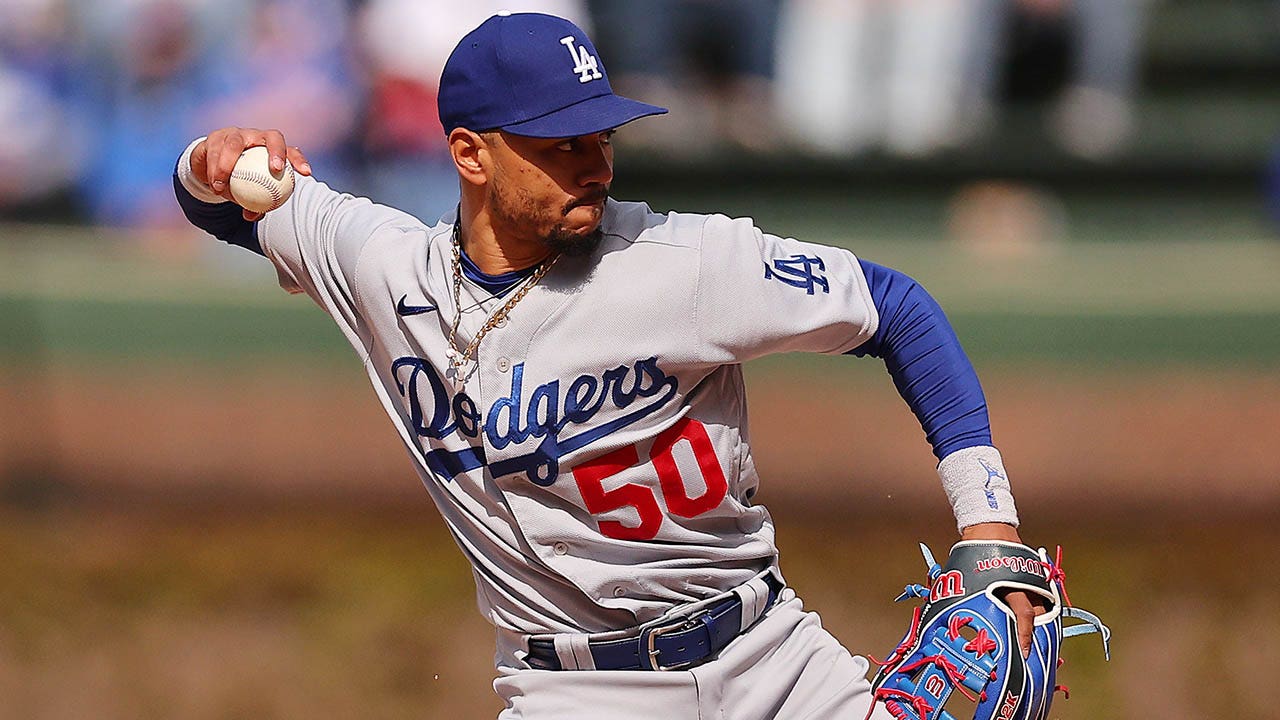Erling Haaland is frequently portrayed as a lethal Scandinavian footballing machine whose sole purpose is to compute the most effective way to score goals.
It is a tempting way to describe a 6ft 4in (194cm) Norwegian whose goalscoring records are on another level — it’s now 97 goals in 102 appearances for Manchester City if you were wondering.
Most of Haaland’s goals for City are one-touch finishes inside the penalty area — a result of being in the right place at the right time. His exquisite off-ball movement means that he is usually in the correct position, and that is complemented by constant scanning of his surroundings.
They are the type of goals that present Haaland as an inevitable cyborg — but that’s not entirely fair. Looking past his clinical strikes opens up a rich seam of technique and artistry in Haaland’s finishing.

With seven goals in three Premier League games this season, Erling Haaland is… inevitable (James Gill – Danehouse/Getty Images)
In his first season with City, Haaland scored only once from outside the penalty area, away to Wolverhampton Wanderers in September 2022. That’s not the significance of the goal though, because what he does is more important than where he does it.
Here, Haaland receives the ball with his left foot and it’s Maximilian Kilman up against him…

Kilman is expecting Haaland to shift the ball onto his stronger left foot, which is clear from the centre-back’s body shape. However, the City striker dummies a move towards his left foot…

… and then pushes the ball towards his right, which forces Kilman to change his body orientation by rotating clockwise…

… and losing sight of the ball for a moment.

That fraction of a second is enough for Haaland to strike the ball into the bottom corner.
Interestingly, he shoots towards the side from which Kilman has just rotated away. That makes the shot harder to block because the defender’s torque is moving him in the other direction.

Another feature of Haaland’s game that is often overlooked is his ability to use both feet to create the best shooting angle and finish chances quickly.
In this example, against Nottingham Forest last April, Kevin De Bruyne finds Haaland near the penalty area, and Murillo positions himself in a way that forces Haaland to go onto his weaker right foot. The City striker uses his left foot to dribble into space…

… but then quickly shoots with his right before Forest’s goalkeeper can close down the angle. In this instance, Haaland’s ability to use his left and right foot in conjunction allows him a less-than-a-second advantage compared to dribbling with his left and then shooting with the same foot.

In a much more recent example, against West Ham United last Saturday, Haaland is waiting to receive Rico Lewis’ pass inside the penalty area with Emerson Palmieri the closest defender to the City striker. Lewis plays the pass to Haaland…

… and Emerson moves towards him, but the Norwegian controls the ball with his right foot against the direction of the left-back’s movement…

… and curls it into the top of the net. Again, by receiving with his right and immediately shooting with his left Haaland saves a fraction of a second compared to only using his left foot.
Another key point here is that his first touch moves the ball against the direction of Emerson’s movement, which makes it harder to block the shot because the left-back’s body weight is residing on his left foot and he is trying to block with an unbalanced right.

Haaland takes a risk by controlling the ball back towards the centre, where there is less space, rather than letting the ball roll across him, because the first option provides a better shooting angle. And it works because he takes Emerson out by setting up the shot in the opposite direction of the left-back’s movement, in addition to the speed of the execution as a result of using both feet.
Whether Haaland controls the ball with his left or right foot depends on the situation and where he wants to shoot from. In this example, against Leicester City in April 2023, De Bruyne plays the ball into the path of Haaland on an attacking transition.

Against an unorganised defence, Haaland pushes the ball into space with his first touch by using his left foot to keep it away from Leicester’s central centre-back, Harry Souttar, and the goalkeeper…

… before dinking it over the latter to score yet another goal. The difference is minimal, but if Haaland uses his right foot to push the ball forward, there is a higher probability of it being closer to Souttar and the goalkeeper when he is taking the shot.

In another example, from the 1-1 draw against Liverpool in November, Haaland is positioned between Virgil van Dijk (No 4) and Joel Matip (No 32) when Nathan Ake plays the ball to him.

First, Haaland is positioned outside the goalposts when he receives the ball, which means that pushing it away from Van Dijk and Alisson with his left foot is a non-starter because the shooting angle is already narrow.
Instead, Haaland controls the ball with his right rather than his left to distance it from Matip and allow him to quickly use his left on the following action…

… in which he sets up the shot…

… and puts the ball into the far bottom corner.

The final example is from City’s 2-0 victory against Chelsea last month. Here, Bernardo Silva flicks the ball to Haaland inside the penalty area…

… and the Norwegian controls it with his right…

… but dribbles with his left instead of shooting…

… then uses his right again to be able to quickly shoot with his left…

… which he eventually does when he chips the ball into the back of the net.

The reason behind the delayed shot was that Haaland predicted that Robert Sanchez would stay on his line.
“Last year, Sanchez had a great save on me because he stays a lot on the line,” Haaland told Sky Sports after the game. “That’s why I took a couple of extra touches, then he was rushing out and I knew exactly what to do.”
More often than not, Haaland will score with a one-touch finish because he is in the ideal position and that’s all he needs to do. However, there will be other situations where more work is required and the City striker knows precisely what to do there, too.
Sometimes Haaland’s finishing might look robotic, but look a little closer and the artistry becomes clear.
(Top photo: Henry Nicholls/AFP via Getty Images)






